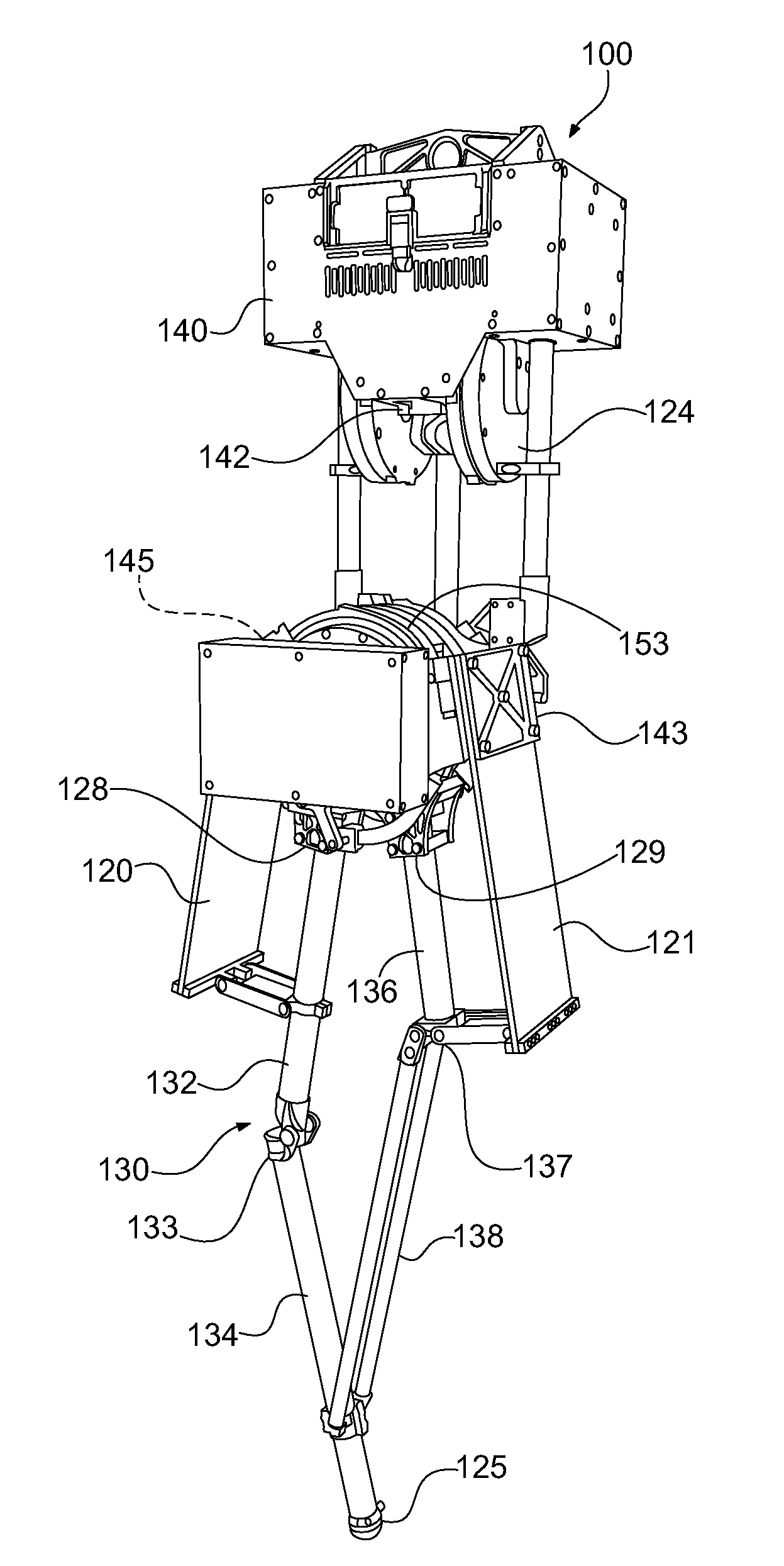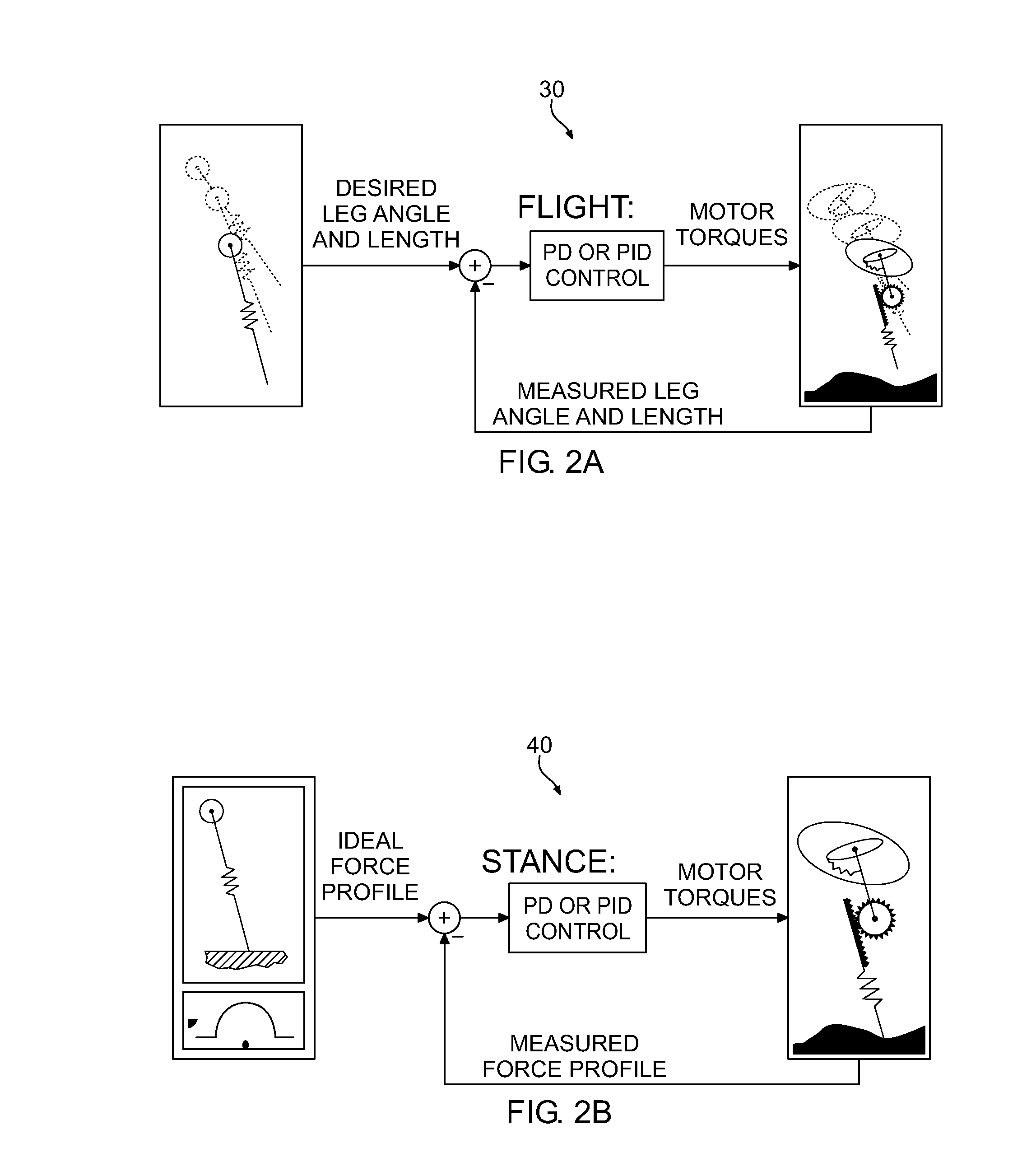Apparatus and method for legged locomotion integrating passive dynamics with active force control
a technology of passive dynamics and legged locomotion, applied in the field of legged locomotion devices and methods, can solve problems such as destabilization of gai
- Summary
- Abstract
- Description
- Claims
- Application Information
AI Technical Summary
Benefits of technology
Problems solved by technology
Method used
Image
Examples
example
[0049]Based on the principles embodied in the force-controlled model 20 and favorable results evidenced in the simulations, a robot 100 for legged locomotion was constructed in the form of a monopod which closely matched a spring-mass model, with actuation to overcome inevitable energy losses and model mismatches, FIG. 7. The leg 130 was provided in the form of a four-bar linkage comprising an posterior thigh segment 132 and posterior shin segment 134 pivotally joined at an posterior knee joint 133 along with a anterior shin segment 136 and a anterior thigh segment 138 pivotally joined at a anterior knee joint 137. The anterior thigh segment 138 was pivotally attached to the posterior shin segment 134 intermediate the posterior knee joint 133 and toe 125 of the posterior shin segment 134. The upper ends of each of the leg segments 132, 136 were pivotally mounted to a motor housing 206 via respective free pivot bearings 128, 129.
[0050]To minimize energy loss on ground impact (and to ...
PUM
 Login to View More
Login to View More Abstract
Description
Claims
Application Information
 Login to View More
Login to View More - R&D
- Intellectual Property
- Life Sciences
- Materials
- Tech Scout
- Unparalleled Data Quality
- Higher Quality Content
- 60% Fewer Hallucinations
Browse by: Latest US Patents, China's latest patents, Technical Efficacy Thesaurus, Application Domain, Technology Topic, Popular Technical Reports.
© 2025 PatSnap. All rights reserved.Legal|Privacy policy|Modern Slavery Act Transparency Statement|Sitemap|About US| Contact US: help@patsnap.com



